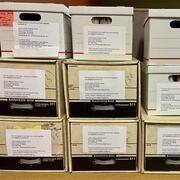Ecosystems
Fish and Aquatic Ecology
Marine Ecosystems
Terrestrial Ecosystems
Wildlife Disease and Environmental Health
Molecular Ecology Laboratory
Our science center has more than 40 years of research experience in Arctic and sub-Arctic regions, a state-of-the-art molecular genetics lab, and a 50-foot marine research vessel. Wildlife and their habitats across the state are important for human cultural and economic sustainability and the media and public actively monitor information regarding the health of Alaska’s ecosystems.















